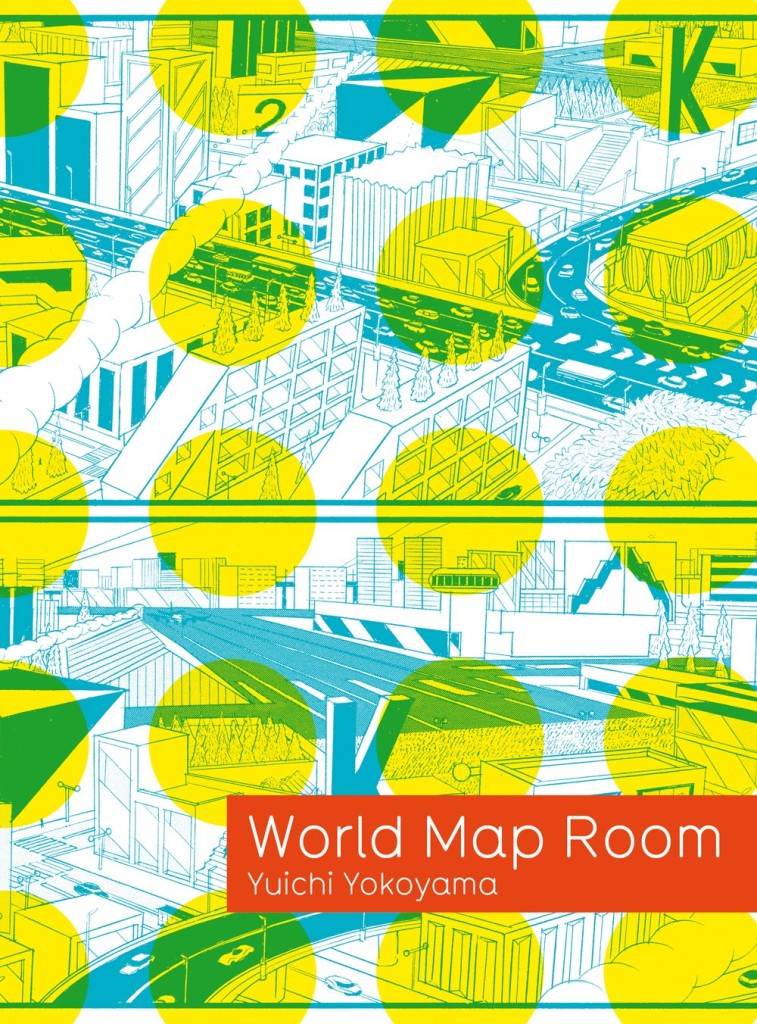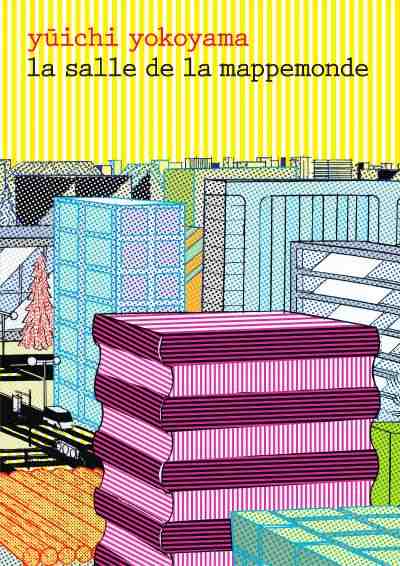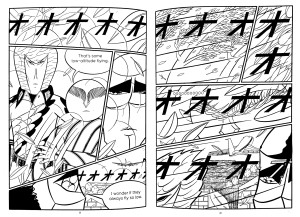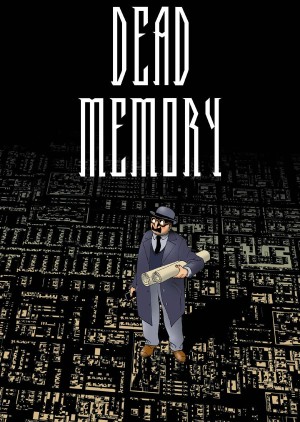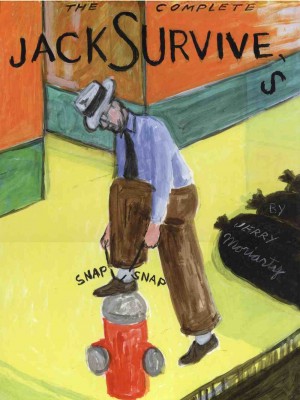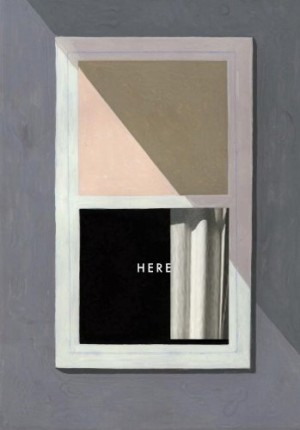Review by Woodrow Phoenix
World Map Room is the fourth of Yuichi Yokoyama’s graphic novels to be published by Picturebox, in a beautifully designed softcover format. The intriguing book jacket conceals a colour image underneath which is part collage and part painting. The interior art has not been ‘flipped’ for foreign readers, so as with the three previous novels, the book retains its Japanese configuration and reads in the opposite direction to an English-language book, from top right to bottom left.
The setting for this book is a big city filled with massive office blocks, apartment towers and other kinds of architecture. The huge variety of buildings in many styles and materials are displayed over double page spreads, as the three protagonists survey the landscape, looking for the place they want to get to. Their journey across the city is punctuated by Yokoyama’s characteristic moments of non-narrative, pure experience such as a powerfully exhilarating encounter with a low-flying aircraft which practically vibrates off the page with its roaring intensity.
There is plenty of dialogue in this story, most of it terse questions and answers. It’s not as obviously info-dumping exposition as in previous books, and some of it is even drily funny. The three protagonists finally arrive at their destination after a few more intense experiences with groups of men and machines. The second half of the book takes place entirely within a mysterious hidden space which surrounds an enclosed garden. The main reception room is lined with glass-walled bookcases filled with interesting-looking books. “There’s no use in reading them,” the host tells his visitors. “They don’t tell me what I want to know.”
The curious visitors pluck a succession of large, heavy-looking art books with graphically sophisticated covers off the shelves to sample the library’s contents. The first book is filled with images of storm phenomena – jagged lightning bolts flying from rainclouds to strike swirling seas. Another book has pictures of fish. A third shows a few men dressed in the same style as the protagonists. A fourth book opens to a picture of grenades. “This book’s about bombs,” the reader says as he flicks through a few spreads of explosions and we look at them over his shoulder. “Interesting?” asks one of the others. “Nope. Not interesting,” he replies.
World Map Room doesn’t really end so much as just stop after 176 pages. Each of the previous books increased in length until Garden, which was a hefty, sprawling 300-page odyssey, but this one is only half as long. Perhaps the abrupt ending is because there are three more stories to come that are connected to this one. Their tentative titles are Flower Garden, Frozen Sea Port and Overtake. Set in one city with a more orthodox plot structure, World Map Room is the most conventional of Yokoyama’s books so far but still a challenging and unique reading experience, unlike anything else out there. The relatively short page count helps the power of his imagery, and makes it his most accessible work for anyone who has never encountered his books before. It’s not as abstract as New Engineering, but it’s just as effective.
